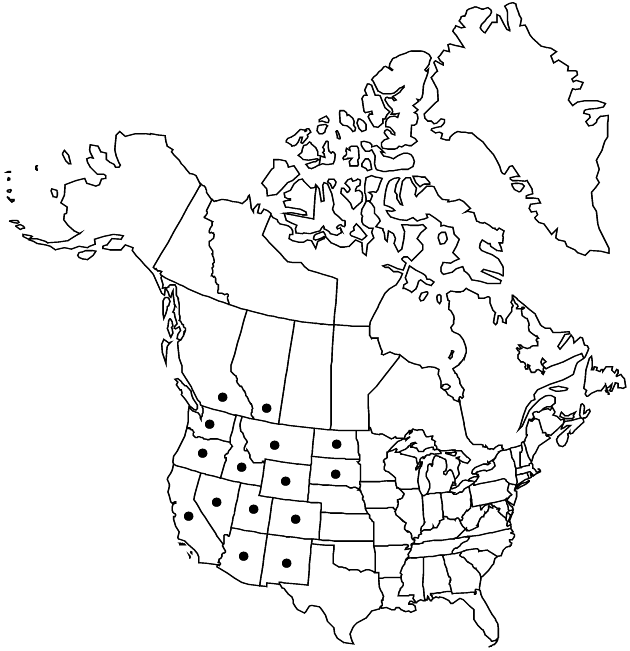Chaenactis douglasii
Bot. Beechey Voy., 354. 1839.
Biennials or perennials, (2–)5–50(–60) cm (rarely slightly woody or flowering first year, sometimes cespitose or ± matted); proximal indument thinning with age, grayish, mostly arachnoid-sericeous to thinly lanuginose. Stems 1–25+, erect to spreading. Leaves basal, or basal (sometimes withering) and ± cauline, (1–)2–12(–15) cm; largest blades ± elliptic or slightly lanceolate to ovate, ± 3-dimensional, usually 2-pinnately lobed; primary lobes (4–)5–9(–12) pairs, ± congested, scarcely imbricate, ultimate lobes ± involute and/or twisted. Heads 1–25+ per stem. Peduncles mostly ascending to erect, 1–10 cm. Involucres obconic to ± hemispheric. Phyllaries: longest 9–15(–17) mm; outer usually stipitate-glandular (sometimes sparsely or obscurely, rarely eglandular) and, often, arachnoid to lanuginose and, sometimes, sparsely villous, apices usually ± squarrose, pliant. Corollas 5–8 mm. Cypselae 5–8 mm (usually sparsely glandular amidst other indument); pappi: longest scales 3–6 mm.
Distribution

North America.
Discussion
Varieties 2 (2 in the flora).
Chaenactis douglasii is widespread and variable (see discussion under var. douglasii).
Selected References
None.
Key
| 1 | Leaves basal (sometimes withering) and ± cauline; plants not or scarcely cespitose, not matted; stems usually 1–5(–12); heads (1–)2–25+ per stem | Chaenactis douglasii var. douglasii |
| 1 | Leaves strictly basal; plants cespitose or ± matted; stems (1–)10–25+; heads 1(–2) per stem | Chaenactis douglasii var. alpina |